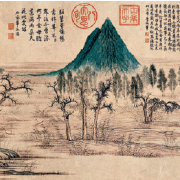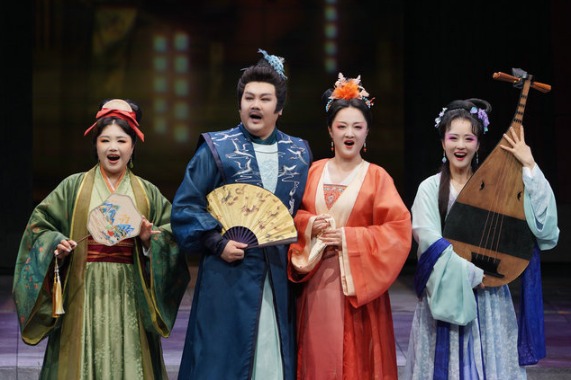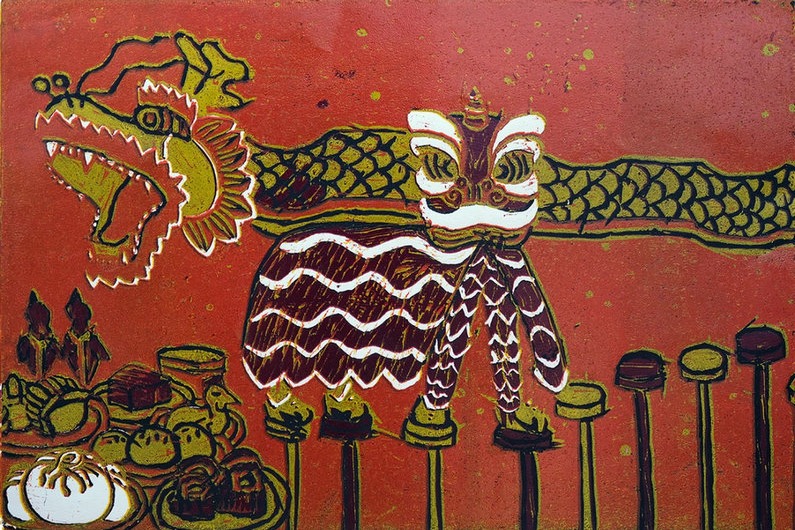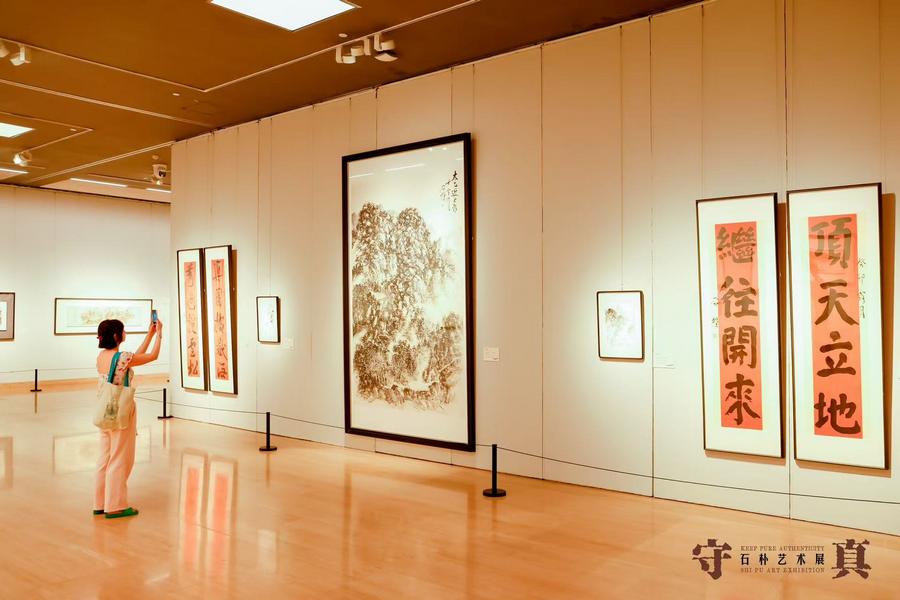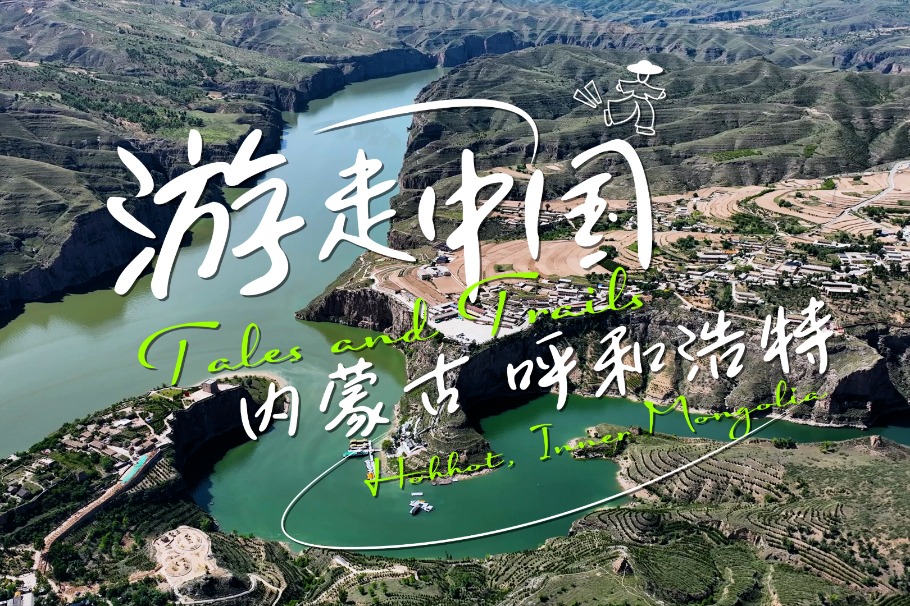Landscaping paintings depicting power of traditional Chinese culture

As an important constituent of the best of China's traditional culture, the splendid and prolific art of landscape painting is an art that melds together the aesthetic and moral sensibilities of the Chinese people, and continues to generate great fascination.
The cultural mentality of deeply loving one's hometown reflects the profound sense of attachment to one's native place that is ingrained within the minds of the Chinese people. This love is always brought on by images of natural scenery, which in turn stimulates even deeper sentiment for the motherland.
For instance, the inspiration for Yuan Dynasty painter Zhao Mengfu's seminal work Autumn Colors on the Queshan and Huashan Mountains was his friend Zhou Mi's intense longing for his ancestral homeland. The entire frame depicts Zhao's impression of the Queshan and Huashan mountains on opposite banks of the Yellow River near Ji'nan. On the left is Queshan, painted with the technique of fiber texture strokes to appear as a serene yet imposing whole, and on the right is Huashan, painted with lotus leaf strokes to highlight its main ridge towering into the sky. Between the mountains are lush thickets of trees and plants, thatched houses, as well as fishermen and domestic animals scattered along the riverbank. The trees are dotted with red leaves to cleverly depict an autumn scene. People who visit the place depicted in Autumn Colors are amazed to discover that more than 700 years later, the overall scene including Queshan and the houses, thickets and riverbanks around its base has barely changed. It is fair to say that Autumn Colors is a classic work in the historical transition in Chinese art from painting scenes of nature to painting impressions of nature.
Ancient Chinese theory on landscape painting always maintained a sense of compassion for everything in nature, and stressed the interdependence between people and their fellow men, nature and society. Northern Song painter Fan Kuan's masterwork Travelers Among Mountains and Streams is a panoramic composition of imposing stature that captures the monumental Qinling and Longshan mountains in simple yet elegant dark ink, and authentically portrays the majesty of the striking northern landscape. From the painting, we can see how our ancient forebears lived and worked among lucid waters and lush mountains. The reason why Fan's work has been passed on and remained relevant is not just because it rose to the peak of Song Dynasty painting on the level of artistic technique, but also because the artistic thought behind it illuminated the traditional cultural ethos of respecting nature, understanding nature and revering nature.
The Chinese nation is a nation that is tied to the natural landscape. The thinking of great sages of the past was intimately connected to the way of nature, and this fed the Chinese civilization's great achievements and forged China's magnificent culture.
All the depictions of the natural landscape transmitted through the brushes of great masters in history share common celebration and praise for traditional virtues like kindness and sincerity.
Northern Song Dynasty painter Wang Ximeng's masterpiece A Thousand Li of Rivers and Mountains is known as one of the 10 greatest ancient Chinese paintings and is the only example in the history of Chinese art where an artist has achieved such enduring fame despite having just a single surviving work.
Painted on a long scroll, the piece is rooted in tradition and incredibly detailed. The misty, rolling rivers and undulating layers of mountains constitute a spectacular landscape scene of the region around the Yangtze River Delta. Static images of fishing villages, markets, waterside pavilions, thatched houses, watermills and bridges call to mind the motion of people catching fish, rowing boats, strolling about and going to market, thus achieving a perfect balance between activity and tranquility. Through a grand view of rivers and mountains, the painting evokes a sense of peace and prosperity as well as awe at China's vastness, and accords with the Chinese nation's aesthetic appreciation for moderation and harmony.
The author of the article is Zhang Qing, deputy director of the National Art Museum of China.




